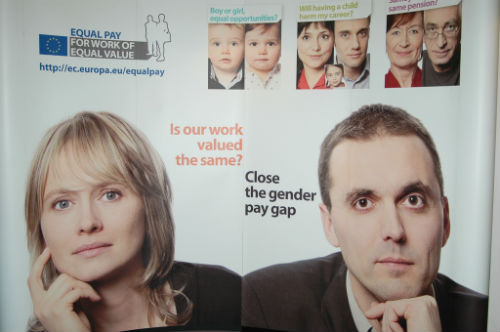In spite of high-profile attempts to remove gender inequality in the IT sector, women remain alarmingly underrepresented in large IT companies. To date, while 50 percent of working Americans are women, women make up 30 percent of technical roles in the U.S. Copious business ideas on this persistent trend exist for budding reporters. This blog explores some angles you can pursue.
Explore and share the data
Since business and tech media exposed the gender gap within the IT sector, big players including Apple, Twitter and Facebook have promoted their programs to improve the numbers of women and people of color working in tech roles within their organizations. Many, like Apple, reveal the ratios of women and minorities at their companies online. For brevity and impact, consider writing an infographic with number breakdowns like this:
| 16.6 | The percentage of women working in tech roles at Microsoft in 2015 |
| 22 | The percentage of women working in tech roles at Apple, globally in 2015 |
| 77 | The percentage of women Internet users using Facebook |
| 16 | The percentage of women working in technical roles at Facebook |
| 1 | The percentage increase in hiring women for tech roles at Facebook since the launch of its diversity program |
| 30 | The average percentage of women working in technical roles within the tech industry |
| $82,690 | The average salary for a computer programmer in the US in 2014 |
| $136,280 | The average salary for an IT manager in 2014 |
Profile people within in the gender inequality in tech trend
Putting a face to the numbers humanizes the story for your reader. So, write a series of profiles on men and women within the trend. For instance, interview an executive recruiter for technology companies on five reasons they believe the gender gap exists. Ask to trail that recruiter and detail their struggle in finding good candidates for these roles. Attend networking events to connect with women working in tech who might be willing to go on (or off) the record on why they think technology companies struggle to recruit and retain women in tech roles. Given that 2016 data released by PayScale found 66 percent of male IT workers felt that equal opportunity exists between men and women compared with 30 percent of female tech workers, clearly perceptions on the problem among men and women differ. Through profiles you can ensure balanced reporting by incorporating male tech workers’ point of view.
Write Q&As on the topic
Find experts at MBA programs and researchers and conduct interviews on the gender gap in technology topic. One alarming and underreported element of the gender and equality problem is that women earn just 18 percent of computer science undergraduate degrees, and unfortunately, those numbers are going down. In 1985, women earned 37 percent of computer-science undergraduate degrees. The nonprofit group Girls Who Code notes that in middle school 74 percent of girls express interest in science, technology, engineering and math, yet only 4 percent of girls select computer science. Ask experts in the know why they think this decline exists and what employers and universities can do differently to make technology and careers in programming more appealing to girls and women.
Localize the story
As you write your profiles and conduct Q&As with local experts, look for local angles for your reporting. Ask what local programs exist to increase the number of girls at high schools and young women at college studying computer science. Find a local IT firm who might feel grateful for business coverage and ask what measures they take to hire more women and mentor more girls. Visit a computer science program at a local university. Spend the day on campus and observe what you see. Interview students on why they think the gender gap persists and what universities and employers can do differently.
Review new books and videos
Check your trusty Amazon.com site for new books on the gender gap in tech topic. Some examples include: 10 Digital Innovators Follow the Geeks by Lyndsey Gilpin and Reshma Saujani’s Women Who Don’t Wait in Line: Break the Mold, Lead the Way. Consider reviewing and highlighting for your reader some of the successful video campaigns such as the three-part satirical video campaign recently released by Girls Who Code. The videos, which poke fun at the stereotypes around why women and girls aren’t suitable for computer programming careers, have already gained 3 million views and accolades from premium media including Time, CNET and Mashable.









